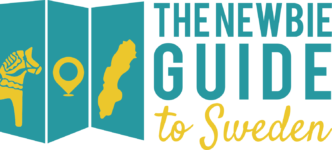Many who are learning Swedish are confused about when to use an -s on verbs in Swedish. Most verbs end with a -r in present tense and -de in simple past as you probably know already, but sometimes there is
There are two different occasions when there is an -s. First of all there we will use -s to express the passive voice of the verb. Secondly -s can substitute the word “varandra” (each other). The grammar term for that is reciprocal verbs. Thirdly, there are a small group of verbs that always have a -s and there is no special reason for that, they just happen to end with a -s in all tenses. In this blog post I will take a closer look at all three types of using the -s.
1) -s expressing passive voice (passiv
Passive voice is used when we don’t know who is taking action or when it isn’t interesting who is doing it. In grammar terms we can express it as that we don’t have an agent in the sentence.
Passive voice is often used in newspaper articles and also news on TV and radio. Here are a few examples from Dagens Nyheter today:
- 17 skadades efter busskrock utanför Piteå.
(17 were injured after a bus crash outside Piteå.)
- Sprängämnesstoff hittades i flickans sko.
(Explosive materials were found in the girl’s shoe.)
- Mordbrännare jagas i Eslöv.
(Fire-raiser is being chased in Eslöv.)
In the examples above we don’t know or perhaps don’t find it interesting who injured the 17 people, who found the explosives in the shoe or who is chasing the fire-raiser in Eslöv.
The passive voice is also used when instructions are given such as recipes for
You will find passive forms on a carton of milk or on a bill like this:
- Öppnas här!
(To be opened here.)
- Betalas senast 100831
(To be paid at the latest by Aug. 31, 2010).
How to construct it?
As you have seen the passive voice can be used for different tenses (actually all tenses) and it’s not complicated to construct the passive version of the verb. You more or less just ad a -s to the regular form except for the present tense where you need to remove the -r. It looks like this:
Present tense:
skadar (regular) skadas (passive)
köper (regular) köps/köpes (passive)
syr (regular) sys (passive)
skriver (regular) skrives/skrivs (passive)
Past tense:
skadade (regular) skadades (passive)
köpte (regular) köptes (passive)
sydde (regular) syddes (passive)
skrev (regular) skrevs (passive)
Perfect participle
We can also create the passive voice with something called “the perfect participle” which is more common in spoken Swedish and less formal Swedish. I will discuss this in a different post but I can show you what our s-passives would look like constructed with a particple:
- skadades – blev skadad
(was hurt)
- hittades – blev hittad
(was found)
2) -s expressing “each other” (reciprocal verbs)
You have most likely used this form of the verbs since you started speaking Swedish and we can find it in some of our most common phrases.
- Vi hörs!
These two words mean something like “We’ll hear from each other”. It’s not stated who’s going to contact who. You can compare it to “Jag ringer dig” (I’ll call you.) where it’s known from the outset who will call who.
- Vi ses!
Is often translated as, “I’ll see you” but literally means, “we’ll see each other.”
- Vi kan träffas klockan tre.
Means “we can meet each other at three o’clock”.
Note: Through the years I have heard many Swedish learners saying things like “jag träffades mina
kompisar ” which isn’t correct. It is a good thumb rule that you can’t use “träffas” when the subject of the sentence is a single person such as jag, du,han or hon.
Here are a few more examples when it is common to use -s for “each other”:
- De kramas.
(They are hugging each other.)
- De pussas.
(They are kissing each other.)
- De slåss.
(They are fighting with each other. /They are hitting each other.)
- De retas.
(They are teasing each other.)
Using -s in the meaning “each other” in different tenses works the same way as with -s for passive voice. Just ad the -s to the regular form except for present tense where you first have to remove the -r:
Present tense
pussar – pussas
Past tense
pussade – pussades
Present perfekt
har pussat – har pussats
-s for no special reason
There are a number of verbs in Swedish that end with an -s in all tenses for no special reason: that is simply just what the words look like. In Swedish grammar books they are called “deponens”. These words are quite common and we use them all the time. Here are a few examples:
- att hoppas – hoppas – hoppades – har hoppats
(to hope for)
- att andas – andas – andades – har andats
(to breathe)
- att lyckas – lyckas – lyckades – har lyckats
(to succeed)
- att minnas – minns – mindes – har mints
(to remember, to recall)
- att finnas – finns – fanns – har funnits
(to be, to exist)
- att låtsas – låtsas – låtsades – har låtsats
(to pretend)
I hope I have been able to clear out the mysterious S! If you wish to learn more about the Swedish language, visit us directly on The Swedish Teacher page where we will be happy to help you!

